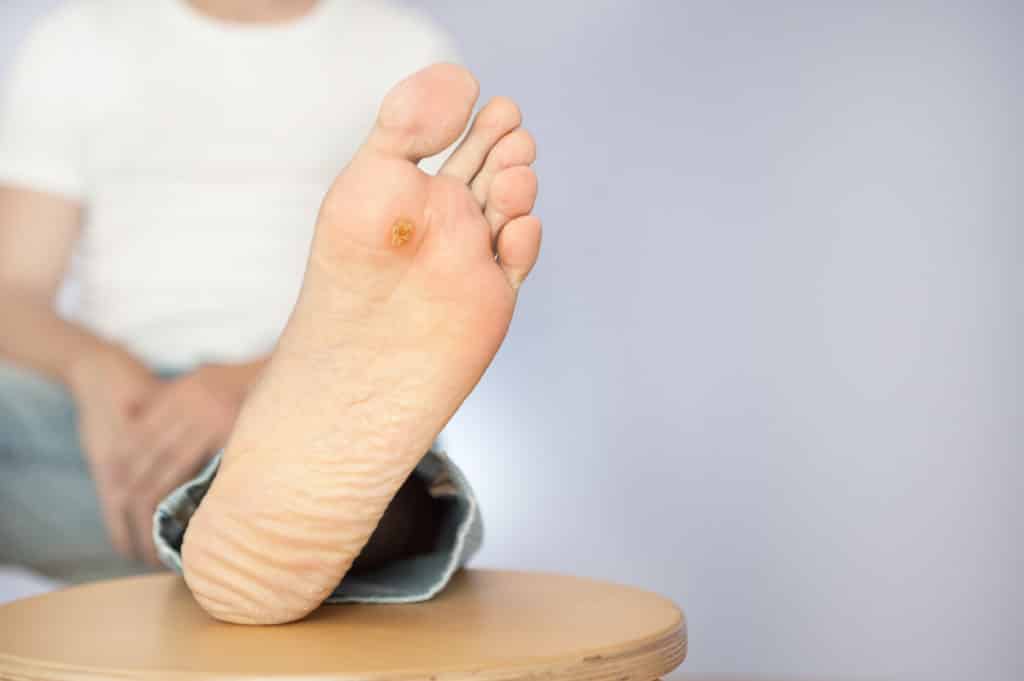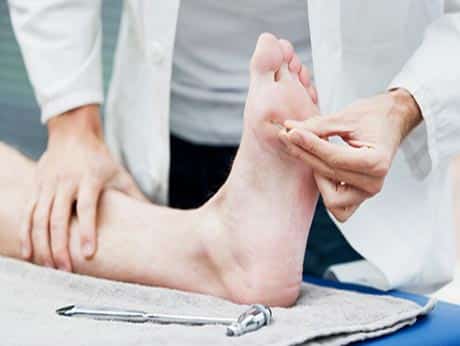Diabetic Foot Ulcers Treatment
If you have diabetes, you need to maintain an awareness of your feet and perform regular checks to ensure each foot remains in good health.
Wounds, sores and diabetic foot ulcers are a common occurrence for diabetics. Most common under the balls of the feet and around the toes, diabetic ulcers can be as deep as the bone and result from a combination of diabetic neuropathy, poor circulation, high blood sugar, and wounds or irritation in the feet.
While there are many causes of diabetic foot ulcers, they are much more likely to occur when there is a combination of factors at work. External factors can include:
- Shoes that constrict the feet or create friction around the toes and ball of the foot
- Poor hygiene if feet aren’t washed thoroughly
- Toenails not trimmed correctly
- Any damage or trauma to the foot that cannot be felt as a result of nerve damage associated with diabetes
One of the dangers presented by diabetic foot ulcers and foot pain is that when a patient has suffered nerve damage to the feet, they cannot feel wounds and the damage continues unabated.
When left unchecked, diabetic foot ulcers can deteriorate into severe medical conditions and in extreme cases, result in amputations.
Treatment of foot ulcers typically starts with ‘off-loading’ to take the weight off the affected area.
During inspections, if you detect any seepage or if there is any discolouration staining your socks that might be the result of a wound on your foot, it’s crucial to book an appointment with your podiatrist to have your foot inspected.
If you’re suffering from Foot Ulcers and Sores, book an appointment with one of our podiatrists in Melbourne CBD, Emerald or Pascoe Vale.
Our podiatrists will introduce a personalised management plan to help address the causes and symptoms of diabetic foot sores.


Treating Diabetic Foot Ulcers
Treatment can take a number of forms for diabetic foot ulcers, and depending on underlying conditions, can also be a protracted and challenging process.
The first step in alleviating the symptoms of ulcers and preventing further damage is known as ‘off-loading’. Removing the weight and easing pressure on ulcers is essential to ensure the wound does not become worse.
Diabetic foot ulcer treatment tips
PridePlus Health podiatrists have extensive experience in treating diabetic foot ulcers. Here’s our podiatrist, Tim Mulholland, top 3 tips in treating a diabetic foot ulcer:
Your podiatrist may also recommend a combination of:
- Strapping or compression wraps
- A cast or foot brace
- Special diabetic shoes
- Orthotics or special shoe inserts to remove weight from the wound
- Minor surgical treatment to remove foreign bodies and dead skin associated with the ulcer and address any infection - when a foot ulcer becomes infected, it can quickly escalate to a significant problem, particularly if the infection makes it to the bone before a doctor can prescribe antibiotics.
Early Detection of Diabetic Foot Ulcers
Early signs of diabetic foot ulcers:
- Numbness
- Itching
- The feeling of hot/cold feet
- Swelling or redness on your foot
- Unusual odour
It’s important that symptoms are not left untreated. If ulcers and wounds are left untreated and become infected, the situation can quickly escalate to a major medical condition that results in hospitalisation.
Prevention of Diabetic Foot Ulcers
Prevention of foot ulcers in people who have diabetes is infinitely better than trying to treat what can quickly become a serious condition.
Managing blood sugar levels and doing everything in your power to improve blood circulation goes a long way to preventing foot ulcers and sores.
Washing your feet daily in warm water with a soap-free wash, keeping feet dry and moisturised, and checking in regularly with your podiatrist are all essential to maintaining healthy feet for people with diabetes.
If your feet are restricting your quality of life, call the team at PridePlus today and book an assessment with one of our highly trained podiatrists here.



